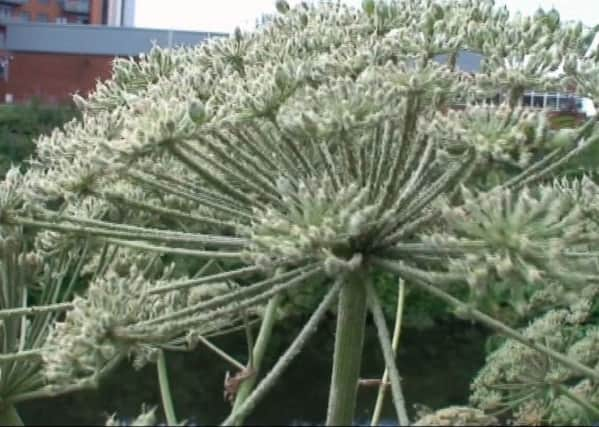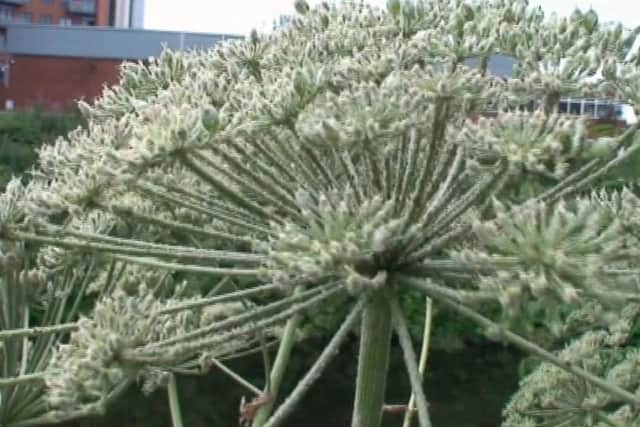Video: Warning as toxic giant hogweed flourishes in Leeds


The plant grows very quickly and contains chemicals known as photo-sensitising furanocoumarins.
These substances prevent the body from protecting itself from UV light and can lead to severe burns.
Advertisement
Hide AdAdvertisement
Hide AdA red rash develops on the skin, which grows more painful and then blisters.


And as our video shows hogweed is flourishing on the side of the River Aire in Leeds.
Your YEP spotted large quantities of the plant on close to its former Wellington Street headquarters.
Ailsa Henderson, one of Yorkshire Wildlife Trust’s living landscape officers, says dealing with the toxic plant is difficult because each plant can produce thousands of seeds.
Advertisement
Hide AdAdvertisement
Hide Ad“These seeds can lie dormant for up to 10 years and then they just pop out which makes it tricky to deal with,” she says.
The Trust leads Yorkshire’s invasive species forum and Giant Hogweed is one of the plants they are trying to help control. “We’ve been tackling this for several years and we’re training up volunteers to help us identify where it’s popping up,” she says.
They have created a map, which can be viewed online, that shows where some of the local hotspots are, such as along the River Aire in Leeds. “We want people to know where Giant Hogweed is in their area and this is a good way of doing that.”
In those places where it’s well established it’s also on the rise, as Paul Cook, curator at RHS Garden Harlow Carr in Harrogate, points out.
Advertisement
Hide AdAdvertisement
Hide Ad“You tend to find it in less accessible places,” he says. “In some parts of the county it’s increasing and in others, where it’s been controlled, it’s going down.”
It’s attractive appearance can lull unsuspecting people who stumble across it into a false sense of security.
“It’s very distinctive but a lot of people have forgotten just how horrible it can be,” says Paul.
Those who encounter Giant Hogweed certainly don’t forget it in a hurry. “When the sap or juice from the stem comes into contact with the skin it can cause intense irritation, particularly in the sunny weather.
Advertisement
Hide AdAdvertisement
Hide Ad“It doesn’t last very long but it can feel like you’re skin is being burned.”
The facts: what does it look like
Giant hogweed (Heracleum mantegazzianum) is a close relative to cow parsley.
It has thick, bristly, reddish-purple stems and can reach over 3m (10ft) in height.
The flowers are white in a flat-topped clusters that can be as large as 60cm (2ft) across.
Advertisement
Hide AdAdvertisement
Hide AdGiant hogweed was originally brought to Britain from Central Asia in 1893.
It commonly grows on riverbanks and wasteland.
Its leaves, stems, roots, flowers and seeds contain toxic components which can be transferred by contact and make exposed skin extremely sensitive to sunlight.
What to do if you come into contact
After coming into contact with the plant, the burns can last for several months and the skin can remain sensitive to light for many years.
NHS advises: “If the sap of the giant hogweed comes into contact with your skin, it can cause severe, painful burns and make your skin sensitive to strong sunlight.
Advertisement
Hide AdAdvertisement
Hide Ad“If you touch a giant hogweed, cover the affected area, and wash it with soap and water.
“The blisters heal very slowly and can develop into phytophotodermatitis, a type of skin rash which flares up in sunlight. If you feel unwell after contact with giant hogweed, speak to your doctor.”